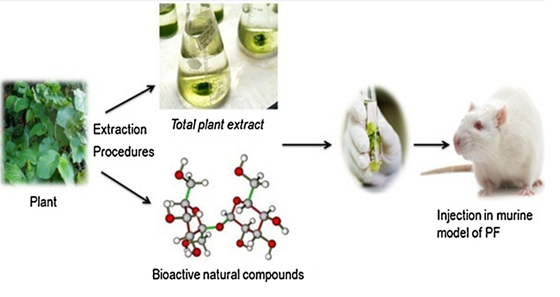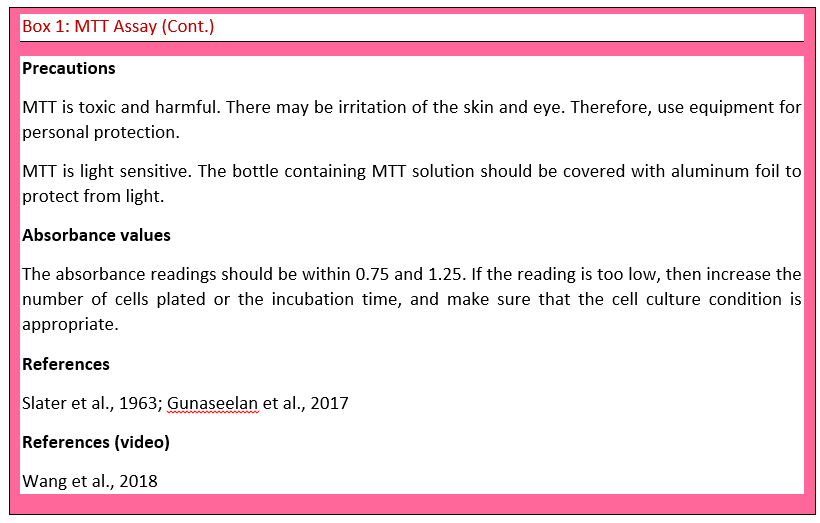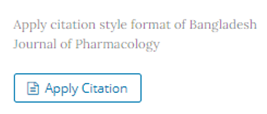Research Article
Research Article
All text (title page, abstract, body and references) should be submitted as one document.
| Beginning section | The following parts are required, in order:
|
|---|---|
| Middle section | The following parts are required, in any order:
|
| Ending section | The following parts are required, in order:
|
| Other elements |
|
Abstract
An abstract is a preview of your research work. Journal editor screens a manuscript based on the abstract's quality. While writing an abstract you should be careful that it will grab reader's attention and make the first impression great. That is why, you have to take time to write a great abstract.
| - The abstract will be after the title page of the manuscript
- It will be a single paragraph - There will be no subheading - Abstract should not exceed 150 words |

- The abstract should:
- Abstract should not include:
|
The abstract should:
Please write the abstract after writing other sections of your paper. Choose main points from your introduction and conclusion. Pick out key points from the method and results sections. Add a sentence to the conclusion.
There is no need to provide graphical abstract.
Example of graphical extract
Introduction
| - Provide background that puts the manuscript into context and allows readers outside the field to understand the purpose and significance of the study
- Define the problem addressed and why it is important - Include a brief review of the key literature - Note any relevant controversies or disagreements in the field - A comment about whether that the aim was achieved - The introduction will be within 500 words. |
Materials and Methods
This section should provide enough detail to allow suitably skilled investigators to fully replicate your study.
| - The section has no word limit
- Specific information and/or protocols for new methods should be included in detail. - If materials, methods, and protocols are well established, authors may cite articles where those protocols are described in detail, but the submission should include sufficient information to be understood independent of these references. - The protocol of one of the methodologies must be written in detail. |


| - One of the methodologies must be in the video form that will help the reader to understand the quality of your methodology. Initially, it is not necessary to submit the video component. The editor will inform the corresponding author to make and submit the video component of one of the methodologies. |
Results
This section should not be combined with the Discussion section. It is further divided into subsections.
| - The section has no word limit.
- The language should be clear and concise. - Together, this section should describe the results of the experiments. - Do not include any citation in the result section. |
Discussion
| > In the first paragraph, you have to write your main findings without using data in digits.
- In the next paragraph, what are the differences between your findings with other authors' findings? - Subsequent paragraph(s) include the possible explanation of your findings. - There will be no subheading. - The section has no word limit. - Do not write the word "Figure 1" or "Table I" within the parenthesis. - Do not show any Figure/Table within this section if possible. |
Conclusion
The conclusion will be based on your results.
| - Conclusion will be in one/two sentences.
- Do not write any suggestion/recommendation. |
References
When you decide to submit your manuscript, then you have to follow the references style of the Bangladesh Journal of Pharmacology.
| - All references should appear at the end of the manuscript in alphabetical order.
- Correspondence between in-text citations and the reference list. - The Bangladesh Journal of Pharmacology uses Vancouver style with minor modification. Examples of the reference style are listed below: |
|
Original Vancouver style |
In Bangladesh Journal of Pharmacology |
Comments |
| Ashafa AOT, Yakubu MT, Ogbe AAA, Abass AA. Effect of ethanolic seed extract of Croton penduliflorous Hutch. on loperamide-induced constipated male rats. Bangladesh Journal of Pharmacology. 2012 May 8;7(1):42-6. |
Ashafa AOT, Yakubu MY, Ogbe AAA, Abass AA. Effect of ethanolic seed extract of Croton penduliflorus Hutch. on loperamide-induced constipated male rats. Bangladesh J Pharmacol. 2012; 7: 42-46. |
Journal name should be in abbreviation The month and date should not be used. Issue number with parenthesis is not needed Last page number should be two-digit |
Journal abbreviation
All journal names must be written in the references as abbreviation. A list of science and medicine journal titles and common abbreviations can be obtained from the following links:
- If you do not get the abbreviation of the article that you want to cite, then you may take the help of either google.com or scholar.google.com
- In case of google.com: Just type or paste the name of the journal and abbreviation in the SEARCH area. Then ENTER. You will get the abbreviation of that journal
Citation format of Bangladesh Journal of PharmacologyIt is present on the right side of each article page or click here to browse the page. PMID citation tool is needed for PubMed-indexed journal articles. To get the PMID, copy the title of the any reference, Click the PubMed and the paste it in the search PubMed area. Then click the search button. You will get the article. After the title of the article, authors name and affiliation, you will get the PMID. Copy the digits and paste it in the PubMed ID Citation Generator for Bangladesh Journal of Pharmacology. In case of single author (Journal)Text citation: (Shukla, 2016)Reference
In case of single author (Journal)Text citation: (Shukla, 2016)Reference In case of two authors (Journal)Text citation: (Kabiri and Setorki, 2016)Reference
In case of two authors (Journal)Text citation: (Kabiri and Setorki, 2016)Reference In case of more than two authors (Journal)Text citation: (Bai et al., 2016)Reference
In case of more than two authors (Journal)Text citation: (Bai et al., 2016)Reference
| Source | Format |
| Journal Article | Arshad U, Janbaz KH, Bashir S, Rehman NU, Mehmood MH, Gilani AH. Ethnopharmacological studies on Chrozophora prostrata in perspective of its folkloric reputation as purgative. Bangladesh J Pharmacol. 2012; 7: 243-48. |
| eJournal (from the internet) | Takebe Y, Saucedo CJ, Lund G, Uenishi R, Hase S, Tsuchiura T, Kneteman N, Ramessar K, Tyrrell DL, Shirakura M, Wakita T, McMahon JB, O’Keefe BR. Antiviral lectins from red and blue-green algae show potent in vitro and in vivo activity against hepatitis C virus. PLoS One. 2013; 2013. |
| Book Chapter | Brown JH, Taylor P. Muscarinic receptor agonists and antagonists In: Goodman and Gilman's The Pharmacological basis of therapeutics. Hardman JG, Limbird LE, Molinoff PB, Ruddon RW, Gilman AG (eds). 10th ed. New York, McGraw-Hill, 2006, pp 141-60. |
| Book in print | Bates B. Bargaining for life: A social history of tuberculosis. 1st ed. Philadelphia, University of Pennsylvania Press, 1992, pp 55-65. |
| Thesis or Dissertation | Wells A. Exploring the development of the independent, electronic, scholarly journal. M.Sc. Thesis, The University of Sheffield, 1999. |
| Personal Communication | Reference to personal communication should be avoided. |
| Websites | Please avoid it. |
